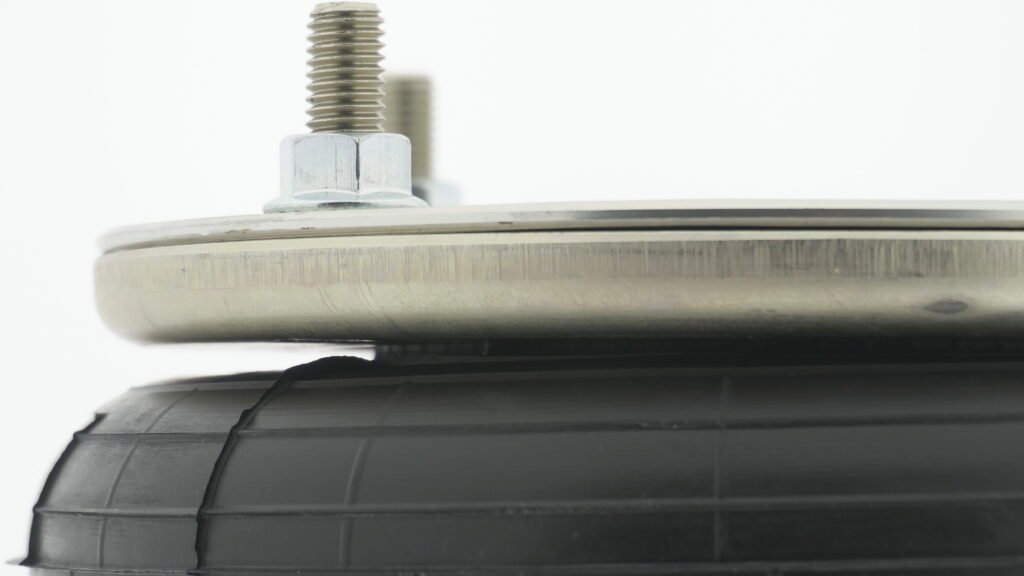
The evolution of air bellows manufacturing has reshaped how industries approach problems of motion, vibration isolation, and precise actuation. Recent advancements in materials, designs, and production techniques have led to significant improvements in both the versatility and durability of air bellows used for industrial applications. As a key element in systems requiring actuation or vibration isolation, air bellows have seen innovative developments that enhance their reliability, efficiency, and applicability in challenging environments.
Improved Material Technologies for Enhanced Performance
One of the most notable trends in air bellow manufacturing is the advancement in elastomer compounds and fabric reinforcements. Traditionally, air bellows were made using standard rubber compounds, which offered a fair balance of flexibility and durability. Today, manufacturers are increasingly using specialized elastomers such as Nitrile (NBR) and Ethylene Propylene Diene (EPDM) to improve the performance of air bellows under extreme conditions. These materials have superior resistance to oils, fuels, ozone, and high temperatures, making them ideal for harsh industrial environments.
For instance, chlorobutyl rubber is now frequently utilized due to its high resistance to acids, making air bellows suitable for applications involving aggressive chemicals. The use of four-ply construction in certain air bellow models is another trend that allows for higher operational pressures—up to 12 bar, as opposed to the standard 8 bar for typical two-ply bellows. This increased pressure capacity results in greater force output and makes these air bellows well-suited for heavy-duty industrial applications.
Advances in Manufacturing Processes
Manufacturers like Tevema have shifted towards automated and more precise production methods, including vulcanization and advanced molding processes, which ensure a consistent finish and higher product reliability. In particular, the integration of computer numerical control (CNC) systems has allowed for the precision shaping of bead rings and end closures, enhancing the quality and uniformity of air bellows.
Another notable advancement is the availability of dismountable designs. The use of bead rings allows air bellows to be disassembled and serviced or replaced easily, reducing downtime and maintenance costs. This is particularly beneficial for industries like rail transport and automotive manufacturing, where maintenance efficiency is crucial.
Application of Air Bellows in Modern Industry
Air bellows have established their importance across a broad range of applications, from vibration isolation in industrial machinery to precise actuation in automotive suspensions. In manufacturing environments, air bellows are extensively used as vibration isolators to protect sensitive equipment from structural vibrations. With the addition of an auxiliary reservoir, the natural frequency of the system can be further reduced, enhancing isolation efficiency to above 99%, making these solutions the go-to for ensuring extended machinery life.
In addition to their vibration isolation properties, air bellows are highly effective actuators. Compared to conventional hydraulic cylinders, air bellows provide a nearly frictionless movement due to the absence of sliding seals, resulting in better efficiency and lower maintenance needs. The unique ability of air bellows to accommodate angular misalignment—up to 30 degrees—also makes them highly adaptable for challenging geometries and variable loading conditions.
“Innovation is the ability to see change as an opportunity—not a threat.” – Steve Jobs
This quote captures the spirit of ongoing innovation in air bellow technology. The enhancements made to the materials, structure, and assembly of air bellows are all about adapting to the changing demands of industrial applications.
Focus on Eco-Friendly Solutions
Environmental considerations have increasingly shaped the development of air bellows. The latest air bellow designs often utilize stainless steel AISI-304 or AISI-316L for end plates, which ensures longer life and resistance to corrosive environments. By using materials that extend the lifespan of air bellows, manufacturers are reducing the need for frequent replacements, thereby minimizing waste and contributing to more sustainable industrial practices.
Furthermore, the shift towards oil-free operation for air bellows used in isolation applications aligns with the global push for cleaner and more sustainable technologies. This trend is especially evident in industries such as food processing and pharmaceuticals, where the use of lubricants poses a risk of contamination.
Automation and Integration in Smart Systems
As industrial automation continues to grow, air bellows have found their place in smart manufacturing systems. The integration of IoT (Internet of Things) sensors within air bellow units allows real-time monitoring of performance metrics such as pressure, temperature, and stroke length. This development supports predictive maintenance strategies, minimizing downtime and optimizing operational efficiency.
Recent advancements also include the use of adaptive control systems that can modulate the internal pressure of the bellows in response to changing load conditions. This type of real-time adjustment guarantees a uniform operating height, regardless of load variations, which is crucial for applications such as platform lifting and load leveling in manufacturing processes.
Versatility in Design and Customization
Tevema‘s offering includes a variety of air bellow configurations, ranging from single convolution to triple convoluted designs. The selection of different types of bellows—crimped, bead ring, and removable top plates—provides flexibility in installation and adaptability to different environments. This versatility is further enhanced by the availability of customized solutions that can be tailored to meet specific requirements such as unusual stroke lengths, pressure ratings, or environmental conditions.
The ability to design compact air bellows with low installed heights has become increasingly important as industries seek to maximize space utilization. Compact designs are particularly in demand for aerospace applications and mobile equipment, where space constraints are a significant factor.
“The measure of intelligence is the ability to change.” – Albert Einstein
The trends in air bellow manufacturing clearly indicate a move towards greater customization, efficiency, and sustainability. Improved materials, smarter production processes, and enhanced integration capabilities make air bellows an essential component in many industrial systems today. With a focus on versatility, reduced maintenance, and eco-friendly operation, air bellows are evolving to meet the diverse needs of industries while pushing the boundaries of what can be achieved with pneumatic solutions.
